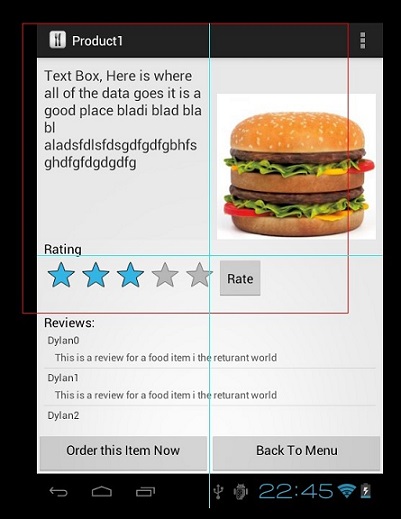I have an android layout which has a scrollView with a number of elements with in it. At the bottom of the scrollView I have a listView which is then populated by an adapter.
The problem that I am experiencing, is that android is excluding the listView from the scrollView as the scrollView already has a scroll-able function. I want the listView to be as long as the content is and for the master scroll view to be scroll-able.
How can I achieve this behavior?
Here is my main layout:
<ScrollView
android:id="@+id/scrollView1"
android:layout_width="match_parent"
android:layout_height="0dp"
android:layout_weight="2"
android:fillViewport="true"
android:gravity="top" >
<LinearLayout
android:id="@+id/foodItemActvity_linearLayout_fragments"
android:layout_width="match_parent"
android:layout_height="wrap_content"
android:orientation="vertical" >
</LinearLayout>
</ScrollView>
I then programmatically add my components to the linearlayour with the id: foodItemActvity_linearLayout_fragments. Below is one of the views that is loaded into that linearlayout. This is the one giving me trouble with the scrolls.
<?xml version="1.0" encoding="utf-8"?>
<LinearLayout xmlns:android="http://schemas.android.com/apk/res/android"
android:layout_width="match_parent"
android:layout_height="wrap_content"
android:orientation="vertical" >
<TextView
android:id="@+id/fragment_dds_review_textView_label"
android:layout_width="wrap_content"
android:layout_height="wrap_content"
android:text="Reviews:"
android:textAppearance="?android:attr/textAppearanceMedium" />
<ListView
android:id="@+id/fragment_dds_review_listView"
android:layout_width="match_parent"
android:layout_height="wrap_content">
</ListView>
</LinearLayout>
My adapter then fills up this list view.
Here is an image from the android hierarchy viewer when I click on the master scrollView:
As you can see, it is excluding the reviews listView.
I should be able to scroll the page down and see 8 reviews, but instead it only shows me those 3, and I can scroll on the tiny part where the reviews are. I want a global page scroll

